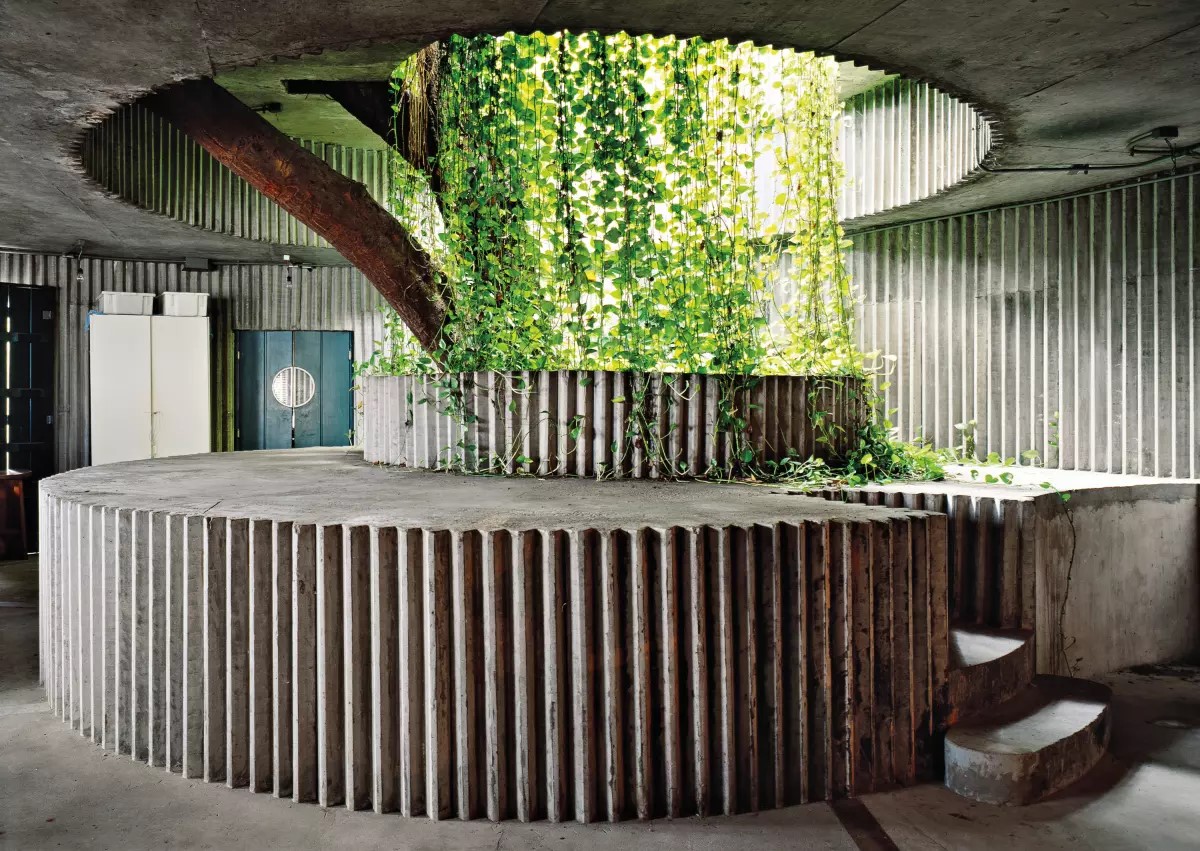Working the Body and Studying as Forms of Combat
05/16/2022
Leia este artigo em português aqui.
Teaching was the opportunity that Helio Eichbauer seized as a way to reduce his activity as a scenographer, and thereby gain some protection from the adversities of that historical moment while continuing to develop his creative and poetic drive, together with his students.

Formation and Production in the 1960s and Early 1970s
Helio Eichbauer recounts in his book Cartas de Marear - impressões de voyagem, caminhos da criação, and in interviews, that after seeing an exhibition of the works of the Czech set designer Josef Svoboda (1920-2002) in 1962, at the Museum of Modern Art in Rio de Janeiro (MAM-RJ), he left the philosophy course on which he was enrolled at the University of Brazil to become a student of that renowned artist, in the Czechoslovak Socialist Republic, between 1963 and 1966.
In 1966 he spent time in Cuba, where he was a member of the jury of the Latin American Theater Festival, promoted by the Casa de las Américas, and where he worked with the Teatro Estudio, touring to several theaters on the island with a production of La noche de los asesinos, by José Triana.
Upon his return to Brazil, following his study of geometric abstractionism in Prague and his sojourn in Cuba, which injected tropical color into his work, Helio Eichbauer worked on projects including the set design for the show O rei da vela [The Candle King], by Oswald de Andrade, in 1967, with José Celso Martinez Corrêa and the Teatro Oficina, in what was a theatrical landmark of tropicalismo.1 From 1967 to 1971, he was associated with the theater director, professor, critic and scenographer Martim Gonçalves (1919-1973),2 who was cited by Eichbauer as the most Brazilian of the directors with whom he worked, given his profound love for his country and connoisseurship of the “breadth and richness” of Brazilian culture (Eichbauer, 2006, p. 122).
Of the eight theatrical shows put on by Gonçalves and Eichbauer,3 two are notable for the fact that the two artists gave joint theater courses during the productions. In 1968, the production of Oscar Wilde’s Salomé –staged at the MAM-RJ– opened the museum’s cycle of theatrical activities and, in parallel with the theatrical season, Gonçalves and Eichbauer developed pedagogical activities in the MAM School Block. In that same year, at the Ateneo de Caracas, in Venezuela, they staged the work Álbum de família, by Nelson Rodrigues, and once again organized educational activities in parallel with the theatrical production. Few studies have been made of these courses, but they remain significant, given that for Gonçalves they represented a continuation — albeit with less intensity — of his artistic-pedagogical work with the Bahia Theater School,4 and for Eichbauer the beginning of his own artistic-pedagogical activities, which would later develop their own characteristics in the 1970s, following the death of Gonçalves.
Álbum de família made possible the application of the experience gained from Josef Svoboda concerning the use of projected images in movement as part of the theater set: the cast acted with each other, and with the projected images. It was also the continuation of an artistic progression in which theater and cinema coexist, and towards which Eichbauer was inclined. The work of the Russian Vsevolod Meyerhold (1874-1940) and the Germans Erwin Piscator (1893-1966) and Walter Gropius (1883-1969), are examples of this progression.
Pedagogical Practice as a Source of Creative Force
Eichbauer and Gonçalves engaged together in teaching activities at the School of Fine Arts of the Federal University of Rio de Janeiro (EBA-UFRJ) during the early 1970s, in what was then the newly-established degree in Scenography and Costume Design. The EBA-UFRJ was still based in downtown Rio de Janeiro, where the National Museum of Fine Arts is now located. According to the artist and teacher Dalila Santos, a student at the time, the new course differed from the others by moving away from the academicism of the period. Although it remained a desk and clipboard oriented course, with drawings and models made by hand based on theatrical texts and studies of the history of theater, Gonçalves and Eichbauer sought to make it a collective affair, with no authoritarianism exercised over the class by the professors (Santos, 2020).5
While Eichbauer was abroad, Brazil suffered the 1964 coup d'état and, with the 1968 Institutional Act Nº 5 (AI-5), the military dictatorship worsened, and a period began that was marked by torture, assassinations, disappearances, restrictions on freedom of expression and creativity, the dismissal of teaching staff, and the exiling of individuals. In 1968, the cast of the production Roda Viva (by Chico Buarque, staged by Teatro Oficina) was attacked by the Comando de Caça aos Comunistas (CCC - Command for the Hunting of Communists).
In 1973, the collaboration between Eichbauer and Martim Gonçalves ended with the death of the latter.6 At the same time, more and more obstacles to freedom of expression were introduced. An example of this was Calabar (by Chico Buarque and Ruy Guerra, with set designs and costumes by Eichbauer and Rosa Magalhães), which was censored on the eve of its premiere.
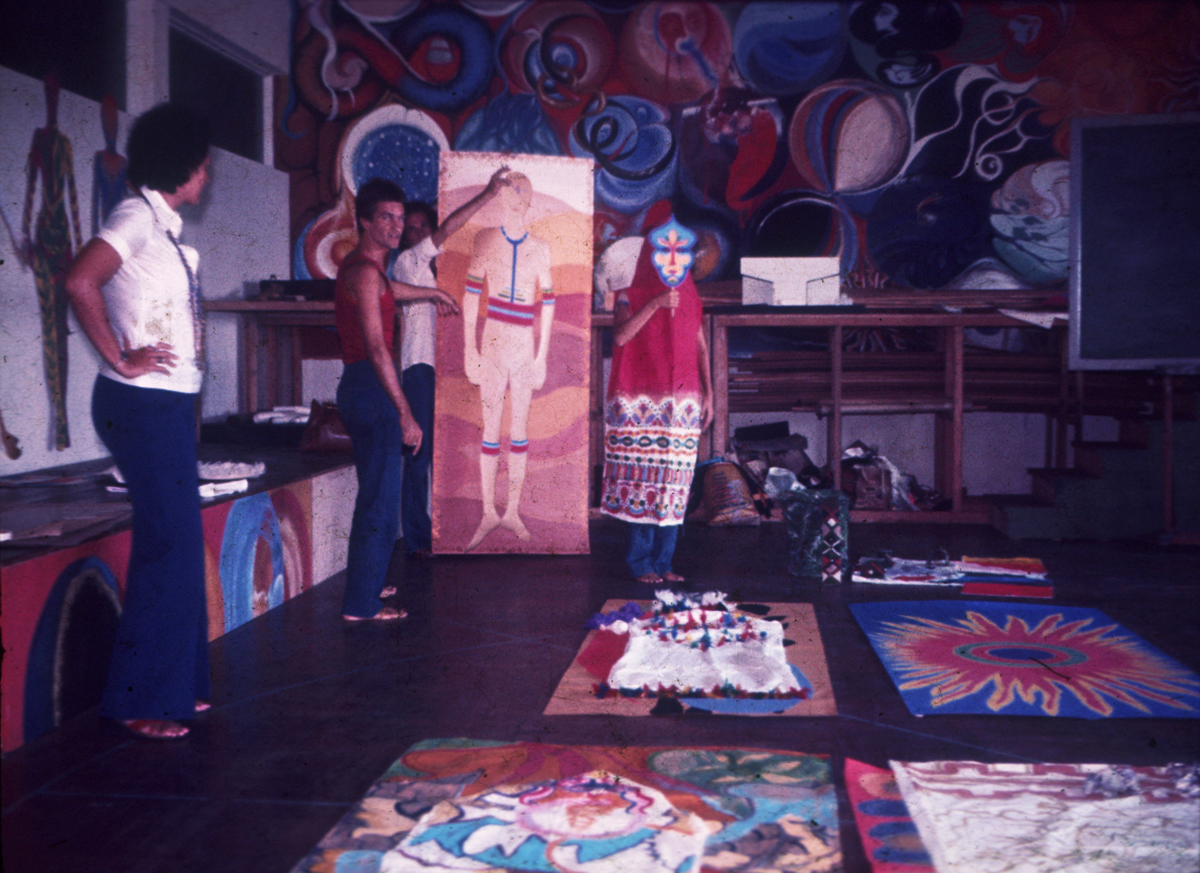

In this way, teaching was the opportunity that Eichbauer seized as a way to reduce his activity as a scenographer, and thereby gain some protection from the adversities of that historical moment, while continuing to develop his creative and poetic drive, together with his students. In an interview granted to Elias Fajardo de Fonseca of the newspaper O Globo, in 1976, Eichbauer declared: “I have also given classes and, currently, I am looking for an exact language for the theater that I do or that they allow me to do” (Fonseca, 1976).7
According to the accounts of individuals who studied with Eichbauer in the 1970s,8 certain aspects of his artistic-pedagogical activity can be verified, such as the rigor with which time and space were addressed, as if each class was the preparation for a rehearsal: Eichbauer would arrive before the class to prepare the room, distributing objects and books, and organizing the furniture in the room. Another characteristic was the fact that the classes were, at the same time, both libertarian and reflective — there was total freedom of expression/corporal expression in his classes — however, these were not random or chance gestures, but instead a form of dialogue with the texts and the authors being studied. The classes were akin to a lived experience, while being like entering a time machine, through reflection and creation in the present based upon dialogue with earlier artistic productions, which functioned as the foundational elements of creative freedom. Eichbauer was a teacher of Modernity, and in his work both life and class converged. In other words, he was himself immersed in poetic investigation; he sought to allow his creative force to flow, in a horizontal collaboration with the class, barely setting himself apart as the professor in such joint activities. Finally, his teaching activity can be characterized by its interdisciplinary nature, in which music, literature and the visual arts were present.
«That society in which we lived was not viable; it was based on the defense of less harmonious models. Studying was a form of combat. Exercise enabled access to a non-historical time, illud tempus, and the discovery there of a pure source. Theater makes it possible to travel in space and time, as does literature, particularly poetry (which is also music). I studied scenography, a spatial-temporal art, in order to travel in time. Our clipboards, our drawings (knights’ shields), our compasses, our scales, are cogs in the Time Machine»
«The moment they call me for a decent job, I do it. [...] given the choice of accepting a job in which I don't see any sense or doing research with my students, I prefer the quest of collective work. What I would call ‘theater of the visual artist.’ So, it is not an escape: it is a voyage, a quest. And I grow along with it»
The UFRJ School of Fine Arts and the Martins Penna School: from the Manual to the Corporeal
Until 1974, the School of Fine Arts (EBA) was based in downtown Rio de Janeiro. The classrooms were furnished with clipboards and high benches, and the work in the classes was predominantly manual, involving drawing and modeling from theatrical texts. In 1975, the EBA was moved to the Ilha do Fundão campus, farther away from the political conflicts of the city center. The classrooms in the new building, designed by Jorge Machado Moreira, were bigger than those downtown, giving rise to larger-scale artistic work: drawings in the form of murals and use of the body. In Eichbauer's words:
«The EBA gave me total freedom: I carried out my mission with enthusiasm and pleasure. The classroom was a laboratory for visual arts, literature, philosophy, architecture and music. We worked with the body and danced on mercurial Wednesdays, when we got together to celebrate the week with lunches that everyone helped to prepare. Platonic Agape. Philia. The course program was the same as that of Prague, with adaptations to the realities of Brazil: a series of graphic exercises, geometric abstraction in planes and in space. Collective canvases, maps of imaginary cities: geology, sociology and anthropology of theater. The study of rituals and popular festivities. Gatherings to listen to music, readings of texts and poetry. Research in public libraries and museums. The consulting of rare books in the library of the Dom João VI museum of the School of Fine Arts. The constructing of cardboard and wooden models, small theaters for exercises in scale and proportion»
In the teaching activity carried out after the collaboration with Martim Gonçalves, there was a greater presence of corporal expression. However, theatrical and literary texts (prose and verse) were not abandoned: they were the basis of artistic and poetic research and experimentation. At the EBA-UFRJ, exercises were done based on Shakespeare's The Tempest, Mozart's The Magic Flute, and Goethe's Faust. There were also exercises and discussions based on texts by Carl Jung, and on Chinese philosophy.
«The classroom floor had a mandala design: circle, square, diagonal and point; the suspended lead wire and the labyrinth of Chartres Cathedral. It was a board for ritual games. Sometimes there were sessions involving the I Ching, or the Book of Changes, in the translation by the great sinologist Richard Wilhelm, with a foreword by Carl Gustav Jung. We read the book The Secret of the Golden Flower, another classic of Chinese philosophy. Taoism and alchemy in the coordination of the scenography course: novels by Goethe, a treatise on scenography from the 17th century, books by Adolphe Appia and Edward Gordon Craig, great masters of modern scenography in the first half of the 20th century, classes on artists of the Russian avant-garde, about the Bauhaus, the worlds of opera and ballet, modern dance and its scenographers and costume designers, the great revolution in the performing arts of the 1970s»
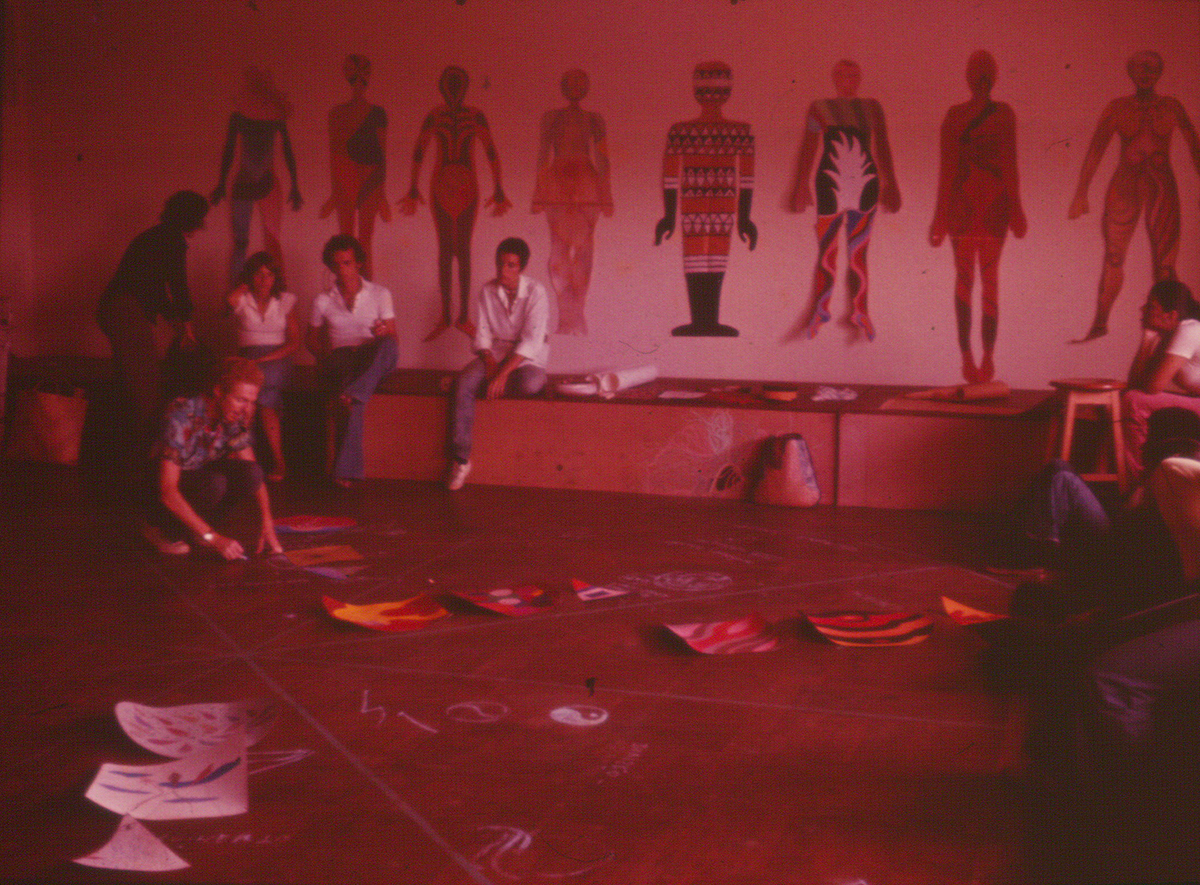
In 1976, Eichbauer was invited to teach at the Martins Penna Theater School,10 located in downtown Rio de Janeiro, in the context of a reformulation of teaching proposed by the new director Klauss Vianna, in which individual development was prioritized over professionalization in acting. Applied Scenography and History of Art were the subjects taught by Helio Eichbauer and Denise Weller. According to accounts from the students of the time, works were produced based on Igor Stravinsky’s Petrushka and Rimsky-Korsakov’s Scheherazade, with collective historical research and corporal practices.
The Parque Lage School of Visual Arts: Intensive Corporal Experience (Forest and Palace)
In 1975, Rubens Gerchman took over the directorship of the Parque Lage School of Visual Arts (EAV), located in a palace in the Tijuca Forest.11 For the practical pedagogical work, the entire constructed area of the house was used, as well as parts of the surrounding park: classrooms, the patio surrounding the swimming pool, the upper balcony with a view of Lake Rodrigo de Freita, the Dois Irmãos hill, the Pedra da Gávea mountain, and Corcovado mountain; in addition, there were exercises in direct contact with nature, among the trees.
The new director invited a teaching team aligned with the artistic innovations of the time, with Eichbauer being responsible for the Oficina do Corpo (Body Workshop), later renamed the Oficina Pluridimensional (Multidimensional Workshop):
«His trajectory as a scenographer throughout 13 years of intensive professional activity and, above all, his flexibility as an artist/researcher, his interest in music, dance, theater and painting (visual arts), enabled him to bring to fruition a proposal that unified these diverse artistic expressions. I remember Jackson Pollock painting canvases laid out on the floor with his body and broad gestures (action painting); Japanese calligraphy; the manifestations of body-art in the 1970s; attempts to recover the body-mind balance, and I watched the transformation of this information into a lived experience in the collectively created works of Helio Eichbauer's students»
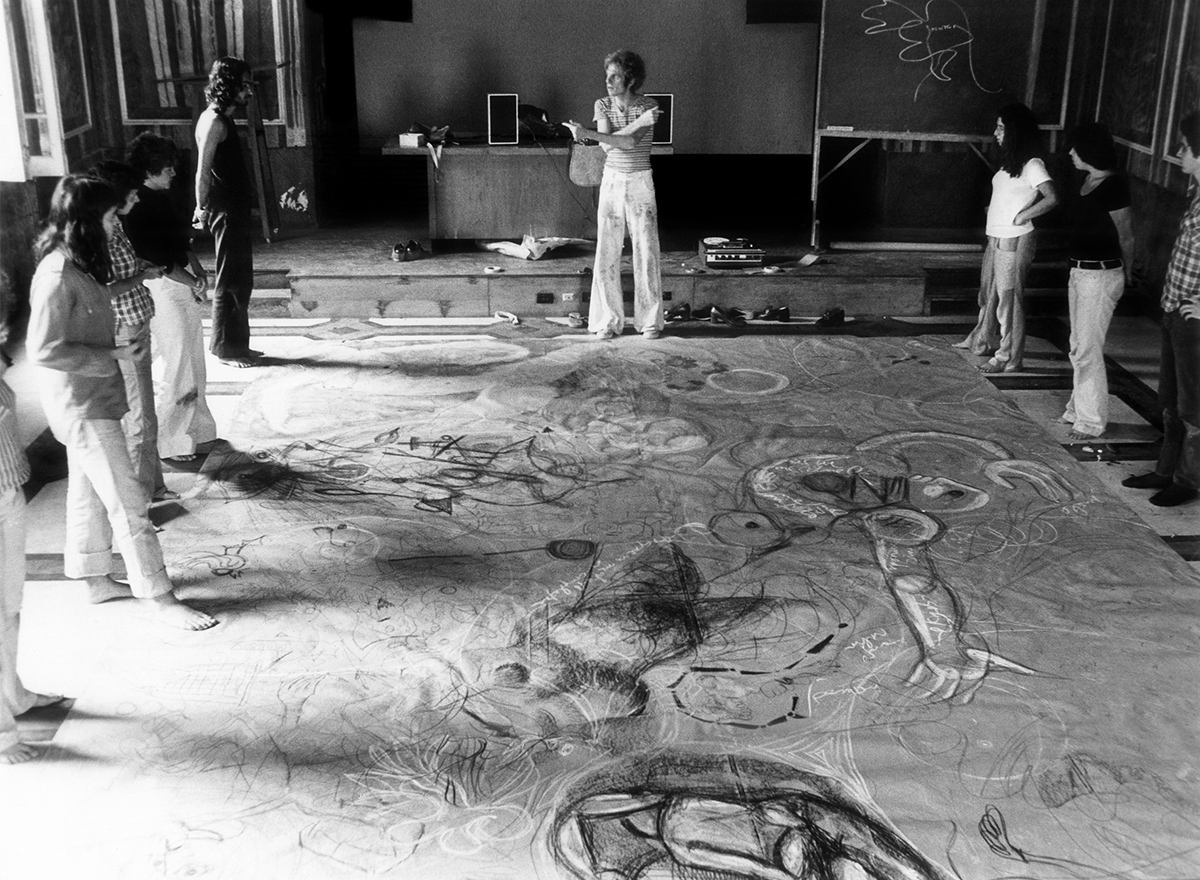

Eichbauer's first pedagogical activity was a vacation course at the end of 1975, inspired by the symphonic poem by Heitor Villa-Lobos Uirapuru. The professor and the entire group made costumes with the flora from Parque Lage and conducted a collective experience in the main hall of the EAV.
The physical space of the EAV and the freedom granted by Gerchman allowed Eichbauer to flourish in his artistic-pedagogical practices, with the conference-shows being the maximum expression of the application of the teachings of Josef Svoboda and of artistic references dating from the beginning of the 20th century, through the use of projected images associated with the readings and corporal practices.
In effect, the conference-shows were performances or happenings, in which the professor and some of the students represented roles and characters related to the defined theme. They took place on a specific day, amid the transformation of the physical space of the school. The first topic, presented by Eichbauer alone, in the main hall of the EAV, was Mayakovsky, Meyerhold and Biomechanics. Another theme studied and presented was Commedia dell'arte and Bumba Meu Boi — Archetypal Relationships — Popular and Scholarly Iconography, for which the patio surrounding the swimming pool was used, in a nighttime presentation with video projections, candlelight, and live music.
«Who had seen a teacher dressed up, painted, giving a class on art? A doll, a clown, a commedia dell'arte character? Only in the Russia of 1920, in Germany’s Bauhaus, or in the eccentric bohemia of the Belle Epoque; in the musical, literary and humorous recitals of the Fine Arts Hall in 1913, which attracted crowds to the National School of Fine Arts»
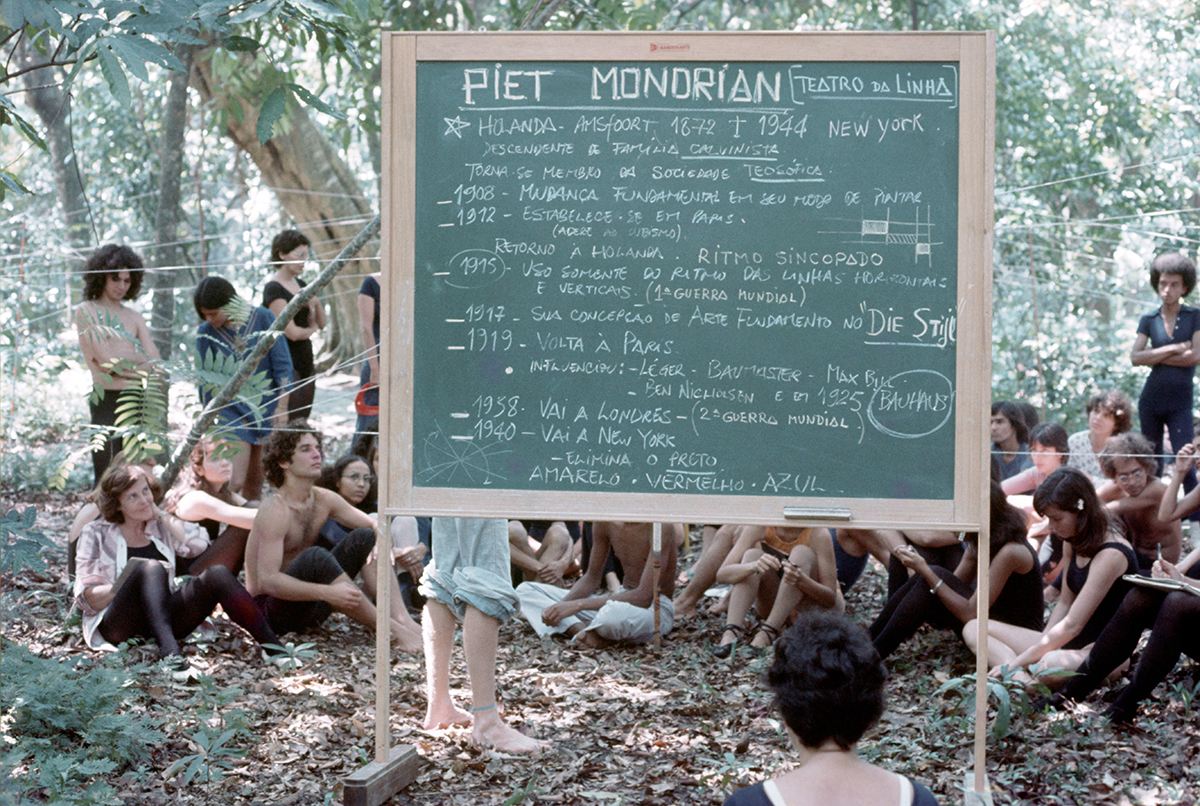

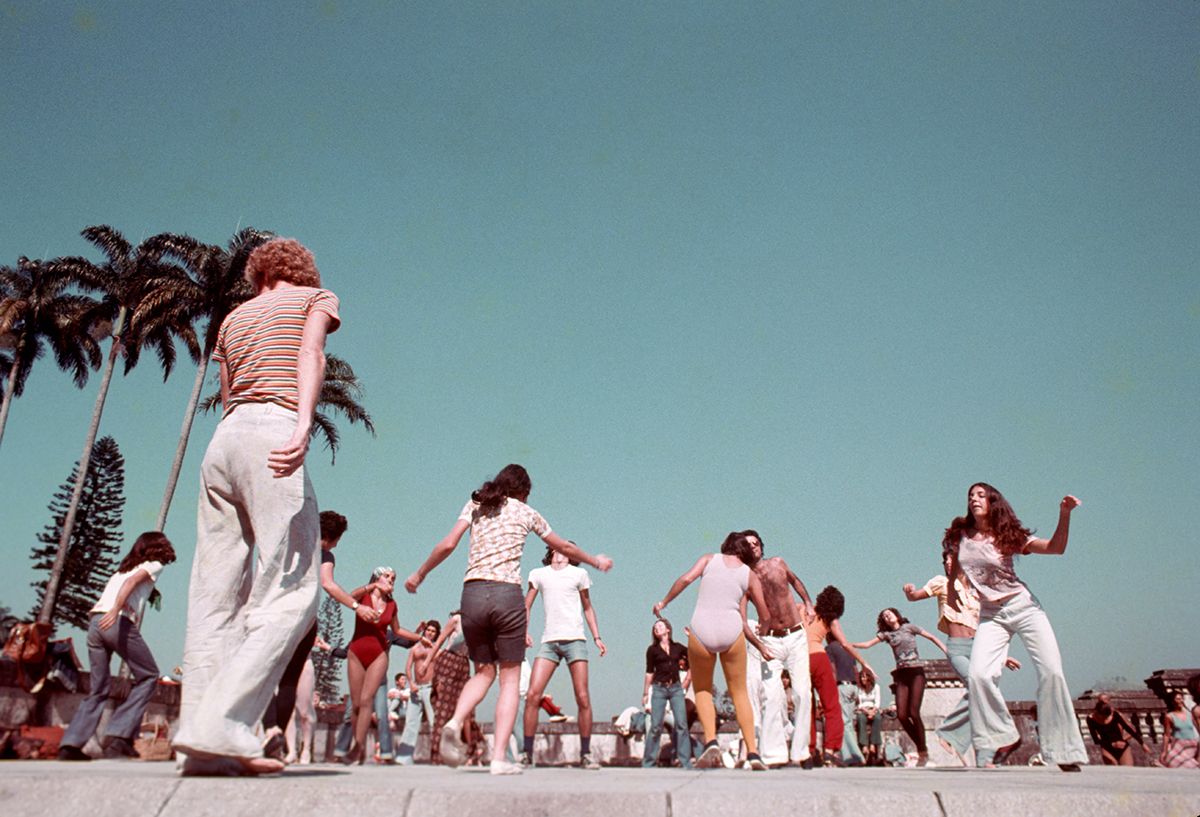
The eternal flame of artistic-pedagogical practice
Corporal expression — because it was a more abstract artistic form and, therefore, less restricted by the military dictatorship — was the path found by Eichbauer to give continuity to his creative force during the difficult years of the 1970s. In the 1980s, Eichbauer was briefly involved in the UNIRIO Scenography and Costume Design undergraduate course, and in the 1990s, he taught a free course on Scenography in Brazil. However, in the early 2000s, he was engaged once again in intensive artistic-pedagogical activity, beginning with a free course offered as part of his exhibition Helio Eichbauer: 40 years of Scenography, at the Correios-RJ Cultural Center, in 2006.13 Before his death in 2018, he taught courses at the Poeira Theater (2007-2008), at the Tom Jobim Space (2009-2010, 2014, 2016-2018), and again at the Parque Lage School of Visual Arts (2011 -2013, 2014-2015). He oversaw some exercises similar to the conference-shows, such as the Suíte Brasileira, as part of a homonymous course at the Tom Jobim Space in 2010, or the dramatized reading of Yukio Mishima’s The Damask Drum, in 2012, as part of a course at the EAV. Finally, also worthy of note is his exemplary demonstration of the intrinsic relationship between professional practice and artistic-pedagogical practice, when in 2013 he prepared the set design for the Show Abraçaço, by Caetano Veloso, with reproductions of paintings by Kazimir Malevich. And in the same year, he taught the free course O truque e a alma, the title of which bore the same name as the book on the Russian theatrical avant-garde written by Angelo Maria Ripellino.

